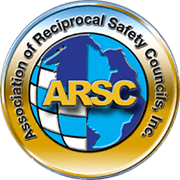By David Womack, Ph.D.
Safety and Health Manager, HSEQ & ARSC Owners Advisory Committee Chair
COVID-19 cases have been confirmed in all parts of the U.S. Workers in all industries are susceptible to the virus. Employers have the duty to determine if any confirmed positive cases should be recorded according to 29 CFR 1904. Under OSHA's recordkeeping requirements, COVID-19 exposure is a recordable illness and an employer’s responsibility to record the case if:
- The case is a confirmed case of COVID-19, as defined by the Centers for Disease Control and Prevention (CDC)
- The case is work-related as defined by 29 CFR 1904.5
- The case involves one or more of the general recording criteria described in 29 CFR 1904.7
Because the virus spreads so easily and employees can be exposed to it at and away from work, work relatedness can be difficult to determine. To assist their Certified Safety and Health Officers (CSHOs) OSHA published enforcement discretion guidelines for them on April 10, 2020. On May 26 OSHA updated those guidelines that are still in effect https://www.osha.gov/memos/2020-05-19/revised-enforcement-guidance-recording-cases-coronavirus-disease-2019-covid-19.
